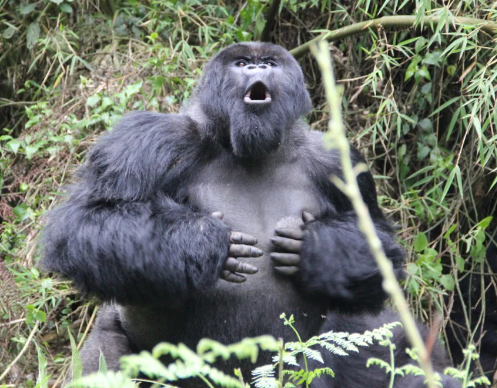The Differences in Gorilla Vocalizations
Understanding gorilla vocalizations is vital for researchers and wildlife enthusiasts alike. These vocal sounds provide insights into their social structures, emotional states, and communication methods. Exploring how these magnificent creatures express themselves can deepen our appreciation for their intelligence and social lives.
Vocalizations: A Spectrum of Sounds
Gorillas have a rich repertoire of vocalizations that range from grunts and roars to hoots and barks. Each sound serves a specific purpose; for instance, grunts often convey reassurance among members of a troop, fostering a sense of community. On the other hand, loud roars may signal distress or aggression, acting as alerts to potential threats. Understanding these nuances helps us see the social dynamics at play within gorilla groups.
Context and Interpretation
The meaning behind a gorilla’s vocalization can change according to context. A hoot, commonly used for greeting or signaling, can take on different meanings based on the gorilla’s body language and the situation. Researchers have noted that when gorillas encounter new stimuli, such as unfamiliar humans or other animals, their vocal responses vary, showcasing their impressive adaptability. These interactions highlight the complexity of gorilla communication, underscoring their ability to express feelings and intentions effectively.
Mother-Infant Communication
One of the most fascinating aspects of gorilla vocalizations is the bond between mothers and their infants. Mothers often use soft coos and gentle grunts to communicate with their young, facilitating reassurance and nurturing. This early form of communication establishes trust and security in the infant, allowing for successful development in a dense, often competitive environment. As infants grow, their vocalizations evolve, indicating increasing independence and exploration of their surroundings.
Conclusion
Gorillas’ vocalizations are more than just sounds; they are complex forms of communication that reveal a wealth of information about these extraordinary animals. Understanding the complexity of gorilla vocalizations allows us to gain deeper insights into their social structures and emotional lives. If you are interested in gorilla communication, consider exploring their behavior, habitats, and conservation efforts. The more we know, the better we can protect these amazing creatures and their habitats. In the arts, many nature-loving creators have also drawn inspiration from gorillas to create exquisite gorilla statues, allowing more people to experience the power and charm of this animal through art.

